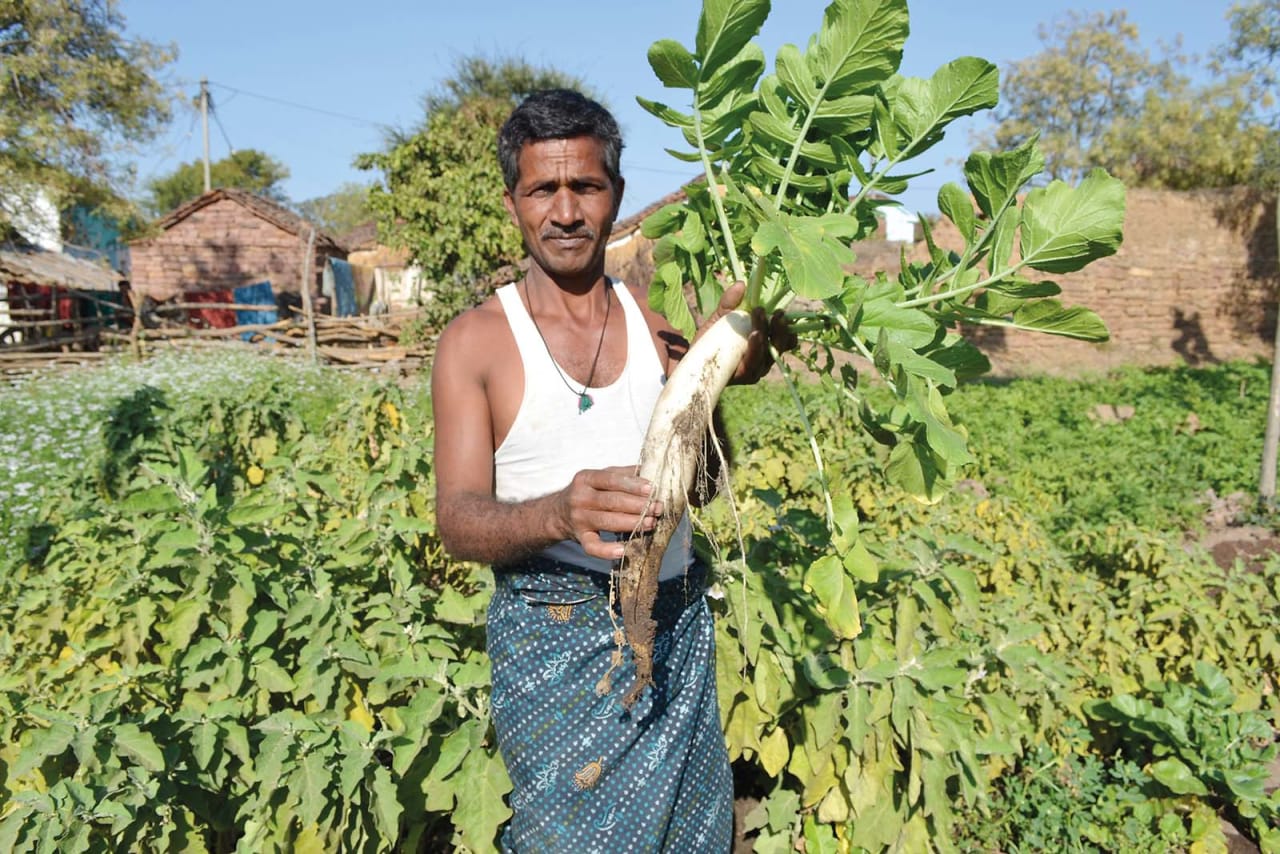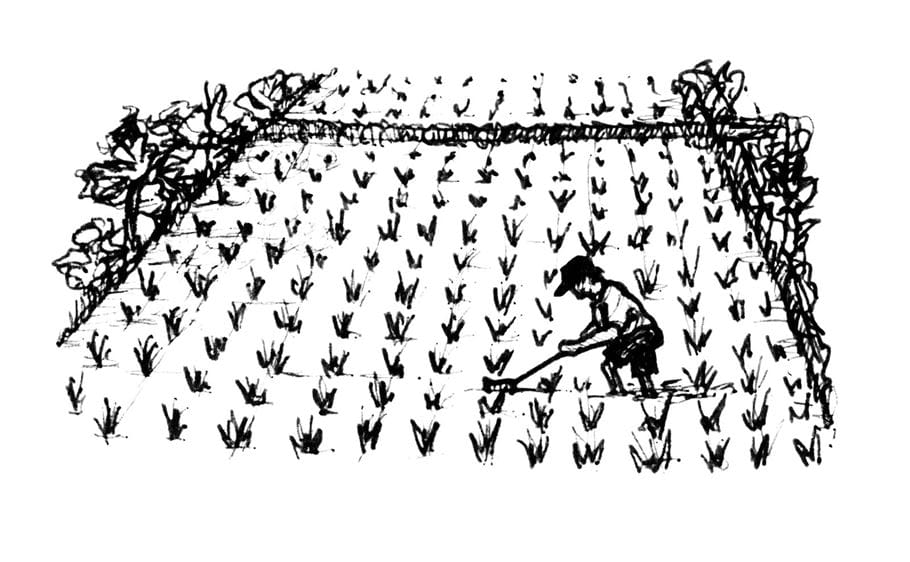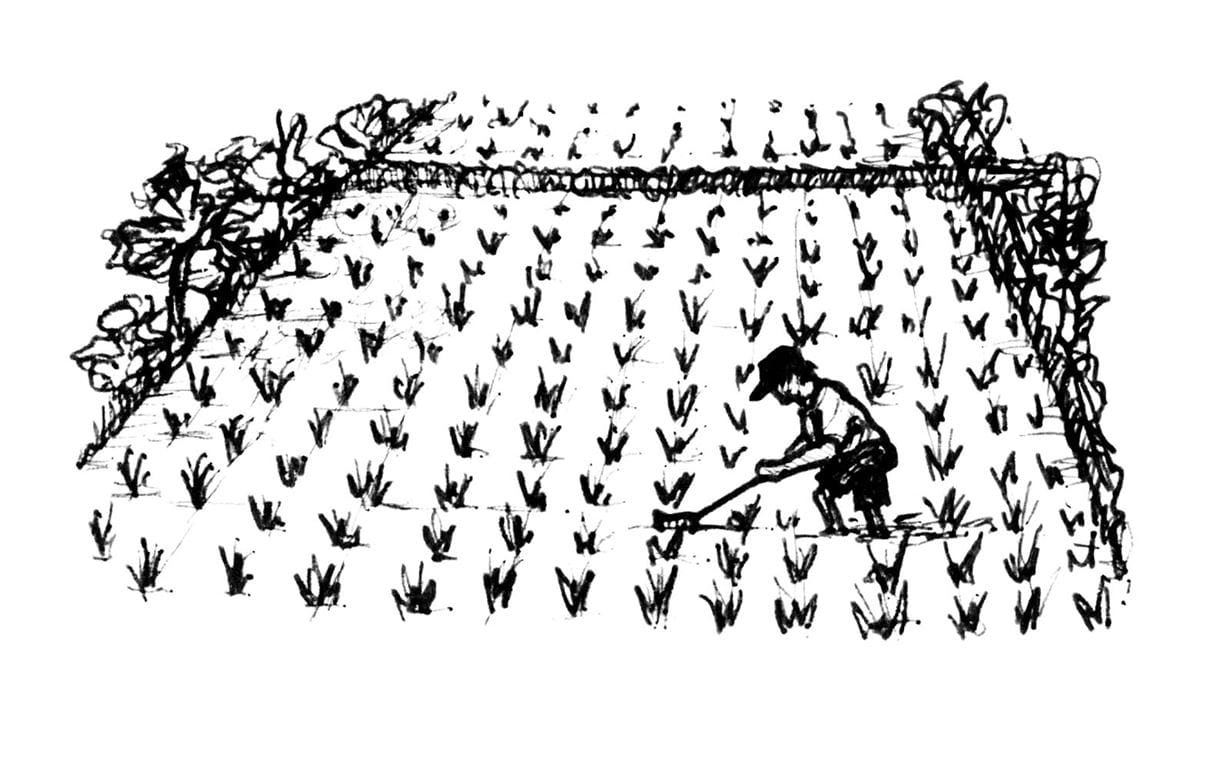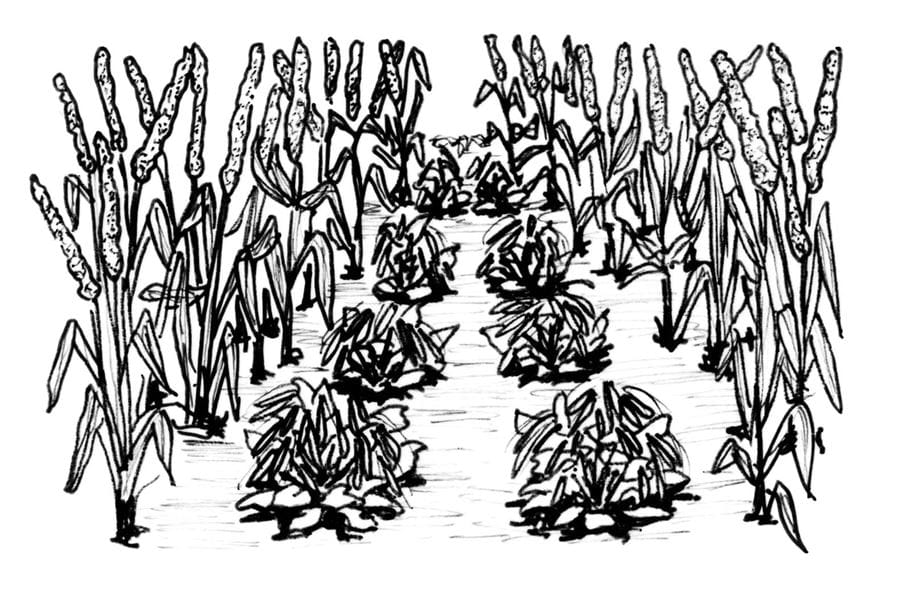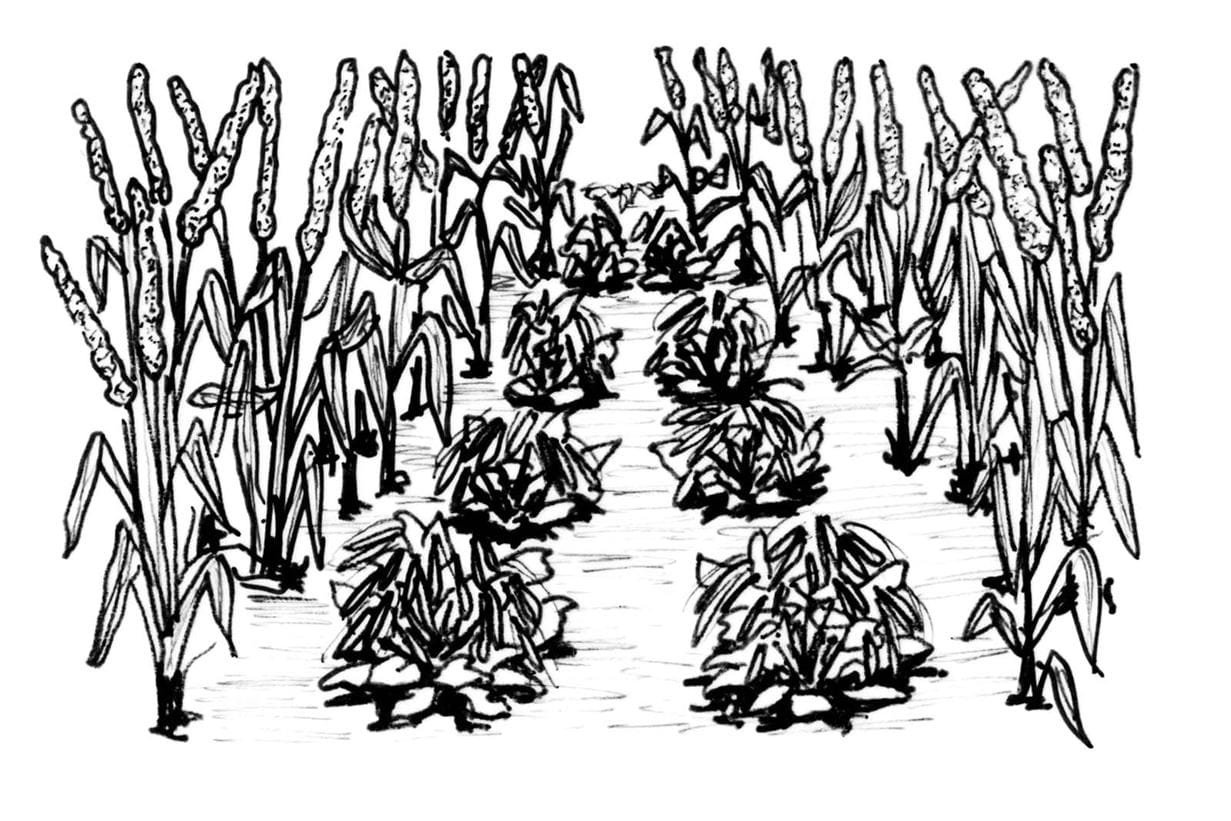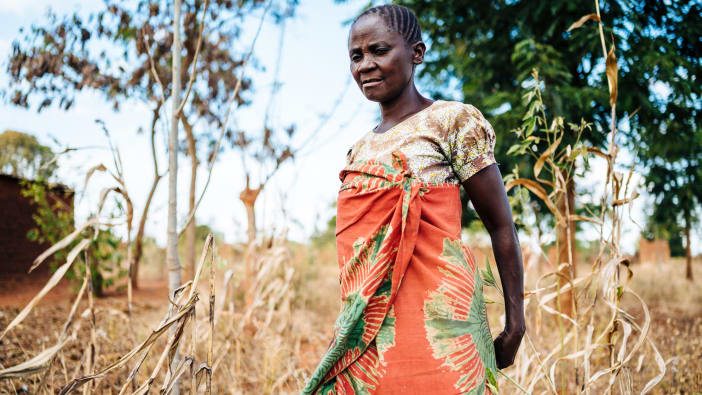System of rice intensification
This is a low-input way of growing rice which results in better yields and more profit for families. The technique uses 25–50 per cent less water than standard rice cultivation methods.
Below are the main steps.
- Plant seeds in un-flooded seed beds fertilised by manure and compost.
- Transplant seedlings when they have two or three leaves (between 8 and 12 days old) instead of after one month.
- Plant single seedlings about 25cm apart, rather than in bunches. This uses fewer seeds and reduces competition for nutrients, space and light. Seedlings develop stronger roots and more shoots.
- Instead of continuously flooding fields, provide just enough water to maintain moisture around the roots. This encourages more extensive root systems, reduces root degeneration and lowers methane emissions (methane gas contributes to climate change).
- To avoid compacting the soil, control weeds using a mechanical hand tool. This keeps the soil full of air and improves plant growth.
- Use organic manure and compost to maintain soil fertility.
Ten million small-scale farmers in more than 55 countries are now experiencing improved yields by using this system.
Intercropping
For centuries, farmers have grown crops in combination with each other. Compared to the more modern approach of growing one crop in large fields (monocropping), this technique has many advantages and is often used in conservation farming.
- Planting crops that vary in height and root structure makes the most of available water, light and nutrients in the soil, increasing overall yield.
- Crops that flower at different times support populations of insects important for pollination and/or pest control.
- Plants vary in their susceptibility to pests, diseases and drought so if one crop is affected, the other crops are likely to remain healthy.
- Diseases and pests can spread rapidly in a monoculture. Intercropping interrupts this spread.
- While one crop is being cut, useful insects and animals can hide in the plants of the remaining crop or crops. In a monoculture, many pest-eating insects are lost because the whole field is harvested at the same time.
- Most of the soil is covered by crops so there are fewer weeds, rainwater soaks into the soil and the risk of soil erosion is reduced.
- Carefully chosen companion plants can increase the yield of the main crop. They may do this by adding nutrients to the soil, providing shade or structural support, or by attracting pests away from the crop.
- Intercropping increases resilience and improves livelihoods because families are not relying on one harvest and one crop. They can adapt to climate change by trialling and growing different combinations of crops. Growing several edible plants together can improve family nutrition.
There are several intercropping methods:
Row: more than one crop grown at the same time, with at least one of the crops planted in a row.
Strip: different crops in alternate strips, with rows big enough to allow harvesting with machinery.
Relay: a second crop planted on the same piece of land after the first crop has reached a certain stage of growth.


